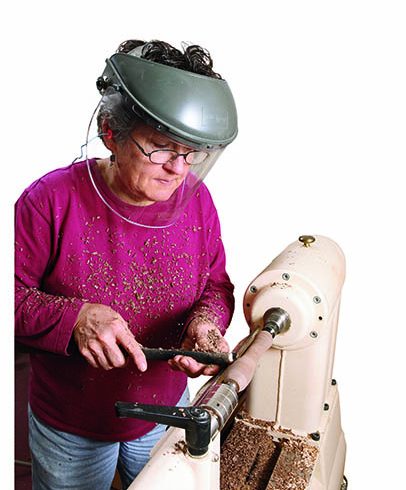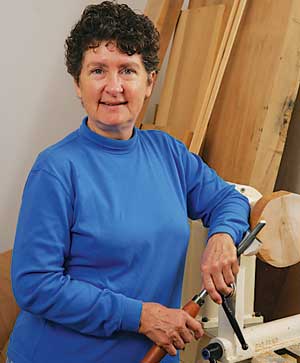
I was privileged to have an excellent instructor and wonderful gentleman teach me beginning woodworking some thirty-plus years ago. Dabney Doty was meticulous and thrifty, accounting for every scrap of wood in the University shop where he’d taught for who-knows-how-many years. I designed a child’s puzzle for my first project and selected a piece of what I considered to be throw-away wood for the base. Not so, according to Mr. Doty: he charged me $1.60 for that piece of wood, worm holes and all! I quickly became a superior wood selector, impressing even Mr. Doty. As long as I was going to pay for it, I would have the best wood.
Over the years, I stocked my modest storage room with a variety of hardwood boards that I had painstakingly examined before choosing. The guys at the lumber stores soon learned to leave me to my own devices until my selection was complete. As I began focusing on woodturning, I harvested a few trees, again adding to my wood inventory.
 Somewhere along the way, and I’m not sure how it happened, I started saving the best wood for use later—for when I became a really good woodworker. So instead of using up the choicest pieces of wood, I would get rid of the worse ones first, culling my inventory.
Somewhere along the way, and I’m not sure how it happened, I started saving the best wood for use later—for when I became a really good woodworker. So instead of using up the choicest pieces of wood, I would get rid of the worse ones first, culling my inventory.
Fortunately I came to my senses a few years ago and realized that sort of thinking and acting was totally backward: if I followed that regimen, I would always be using the worst piece of wood, even when I got to the last board on the pile!
I now select the best wood I have available for whatever I want to make. This way, as I work through my stored wood, year after year, project after project, I’m always using the best piece of wood. When I finally get to the very last piece, it too, will be the very best one.





